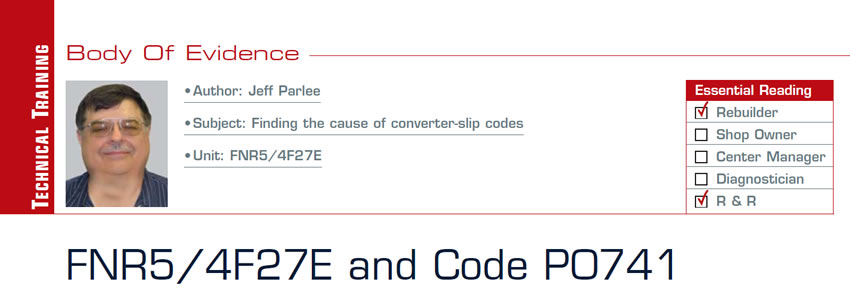Something Amiss with Planetary System
You may remember back in the early days of the 41TE transmission (A604), the sun gear was known to shear off the shell. The result would be no reverse; it would take off in 1st gear but when it shifted into 2nd it would neutralize. With 2nd gear being failsafe, it would default to a neutral gear. The vehicle would then have no movement both forward and reverse. Once the ignition was cycled off to on, you could once again take off in 1st and shift into a no-move condition.
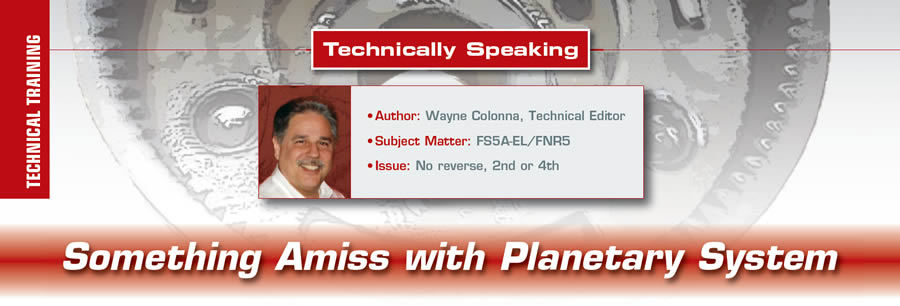
Connector Blues
Wayne Colonna focuses on water contamination of the C134 connector in an FNR5.
A 2009 Ford Fusion 2.3L coupled to an FNR5 transmission comes in to a shop with a host of solenoid codes, gear ratio codes and speed-sensor codes…
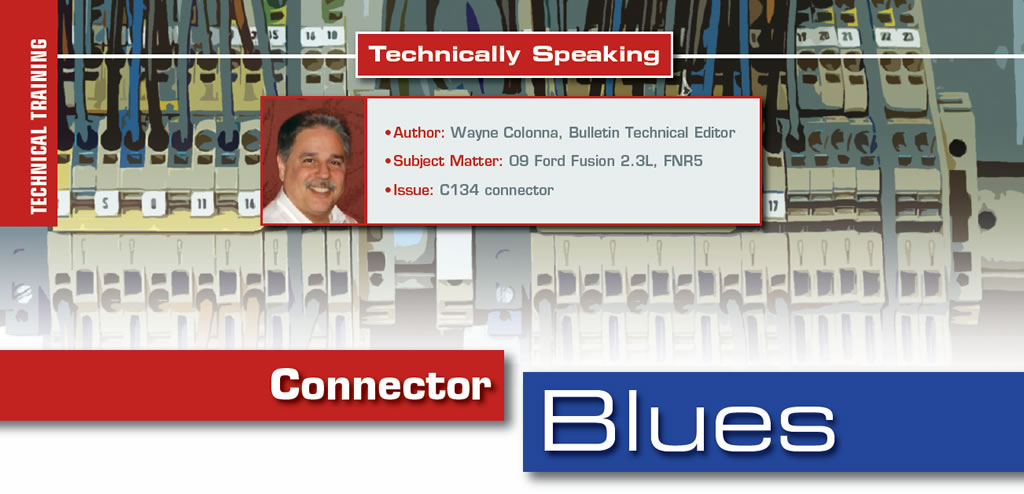
It’s the Little Things
The phrase, “It’s the little things,” is often times pared with “that count” or “will get you.” Both are true when it comes to a loss of reverse after rebuilding a 4F27E. It is easy to overlook the little things that count and it will be the little thing that gets you.
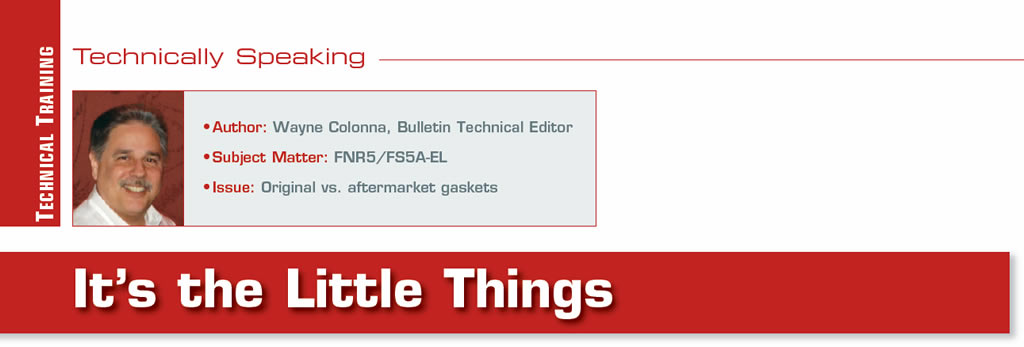
A Little Solder Does the Trick
A 2006 Mazda 3 with a 2.3L engine using a front-wheel-drive five-speed automatic transmission (FS5A-EL known as the FNR5 in Ford) comes into Bebes Transmitech shop in Puerto Rico. The A/T warning lamp is illuminated so codes were immediately checked. Only P0791 was stored in memory. It was logged and cleared before going on a road test where the code set immediately after take off.
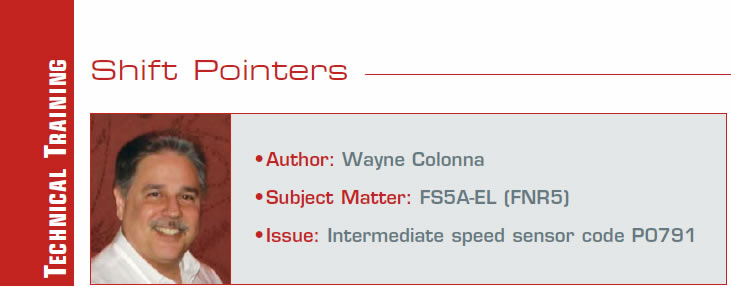
Can a Bad Shift Solenoid Cause No Reverse with OK Upshifts?
Body of Evidence It is not too often that you see a no-reverse concern caused by a bad solenoid or by a valve-body problem that does not affect any forward upshifts. Generally you’ll see this only on valve bodies that have a reverse-inhibit function, such as the 5L40 or JF506. There are always exceptions, though.
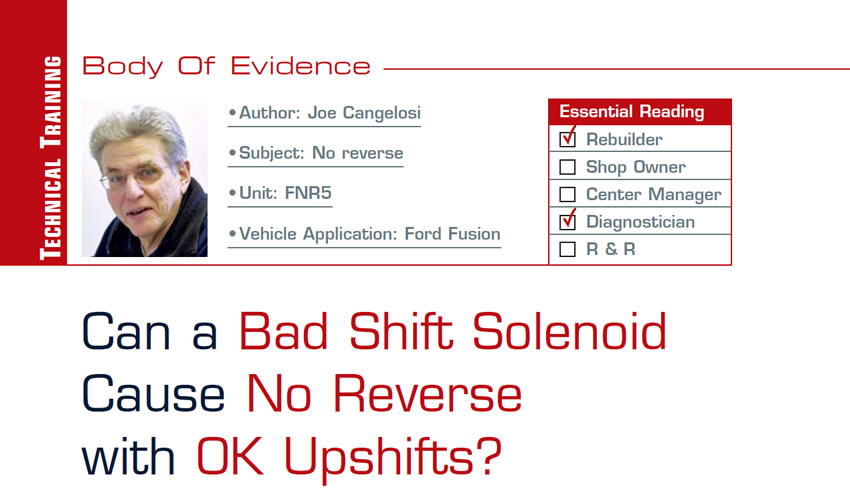
FNR5/4F27E and Code P0741
There are a couple of wear areas in the FNR5 and 4F27E that can cause converter-slip codes to set. Some of the factory trouble-code charts would lead you to believe that a solenoid was bad, because they send you to test the solenoid first. The best thing to do is to determine how the code is setting, and then you can determine where to look for the cause of the code.
